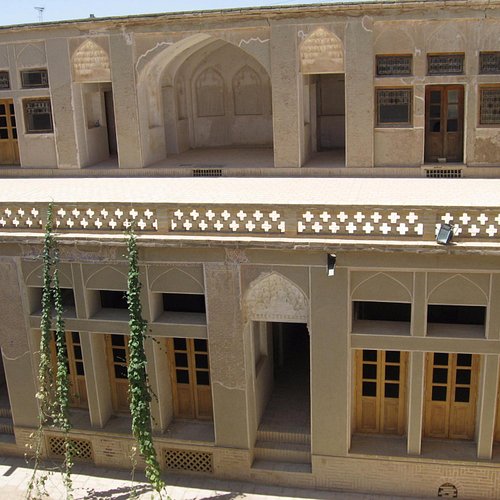Things to do in Nain, Isfahan Province: The Best Points of Interest & Landmarks
Discover the best top things to do in Nain, Iran including Fatemi House, Rigareh Underground Water Mill, Jame' Mosque of Na'in, Mosallah Edifice, Underground manmade caves, Old Bazar.
1. Fatemi House
2. Rigareh Underground Water Mill
Overall Ratings
4.5 based on 22 reviews
The ancient Rigareh--a qanat-based water mill--is located in the Mohammadieh neighbourhood.The age of this engineering masterpiece is unknown; however, some historians believe that it dates back to the pre-Islamic era. The water is supplied by the Keykhosrow qanat channel and the mill is placed almost 28 m underground. The access corridor to the mill is about 133 m long.A qanat channel crosses 12 m above the mill and fills the huge 8 m diameter water tank. When enough pressure is provided, the water is released and rotates the turbine. The waste water flows out along the channel and joins the main qanat channel with a gradual slope 12 m further down. This is the only place in the country where visitors can get inside a living flowing Qanat accessible through a 12 m corridor.Since the advent of electricity to grind the wheat and barley, this water mill has become a part of history.
3. Jame' Mosque of Na'in
Overall Ratings
4.0 based on 95 reviews
The initial construction of Jame Mosque dates back to the 8th Century CE, but the whole of the complex has been constructed incrementally. One of the oldest mosques in Iran, its magnificent stucco over the niche, the marvellous brickwork around the yard, and its silent basement--which may have been used as a fire temple before the mosque was built here—are only a few of the remarkable features of this mosque. This mosque has no Iwan and dome as do the other famous mosques in Esfahan and Yazd. A 28 m tall octagonal minaret was added to the mosque almost 700 years ago. If you stand in the middle of the yard, you will find yourself surrounded by fourteen columns, each one adorned with a unique and intricate pattern of brickwork. You might also be interested in the alabaster stonework which reflects sunlight throughout the basement. One of the most exquisite pieces of artwork inside the mosque is the wooden marquetry pulpit (Persian: menbar). The carpenter matched the wooden parts together like a pieces of a puzzle. The pulpit is decorated with organic geometrical designs. According to the wooden inscription on the left side of the pulpit, it was created about 700 years ago. An underground water channel runs underneath the mosque. There is a stairway that connects the mosque to the water channel and to chambers above the pool. In the past, people used the water for ablutions before prayers. The basement used to be a prayer chamber in hot summers and cold winters. The temperature in the basement is always moderate, never varying more than 10 to 15 degrees. The basement wasn’t actually built; it was dug into the ground, which means no materials were used to construct it.
Reviewed By RodF428 - Royal Wootton Bassett, United Kingdom
This is one of the 3 oldest Iranian mosques, built in the C10th-11th ce. It is unusual in having only a single iwan, not the usual 4, and being domeless. It is largely austere, but has fine stucco-work around the mihrab and the columns at that end of the courtyard. There is also a fine subterranean Winter prayer hall with a very rough ceiling, and an excellent qanat. A very interesting complex, well worth a visit.
4. Mosallah Edifice
5. Underground manmade caves
6. Old Bazar
Overall Ratings
4.0 based on 6 reviews
The Bazaar is another of Na'in's remarkable, historical attractions. The bazaar extends 340 m in a curved line from the Gate of Chehel Dokhtaran to the mosque of Khajeh Khezr and is connected by main alleys as well as by tributary passages to centres of neighbourhoods. The bazaar has two crossroads or chahar su.
Reviewed By banafshetrn - Tehran, Iran
This is one of the most nice and calm bazaar in Iran. Unfortunately it is abandoned and all shops were moved to main street since many years ago but some shops are still active and people work there. I hope that it will be renovated one day and lots of travelers and local people go there to shop and look around.






